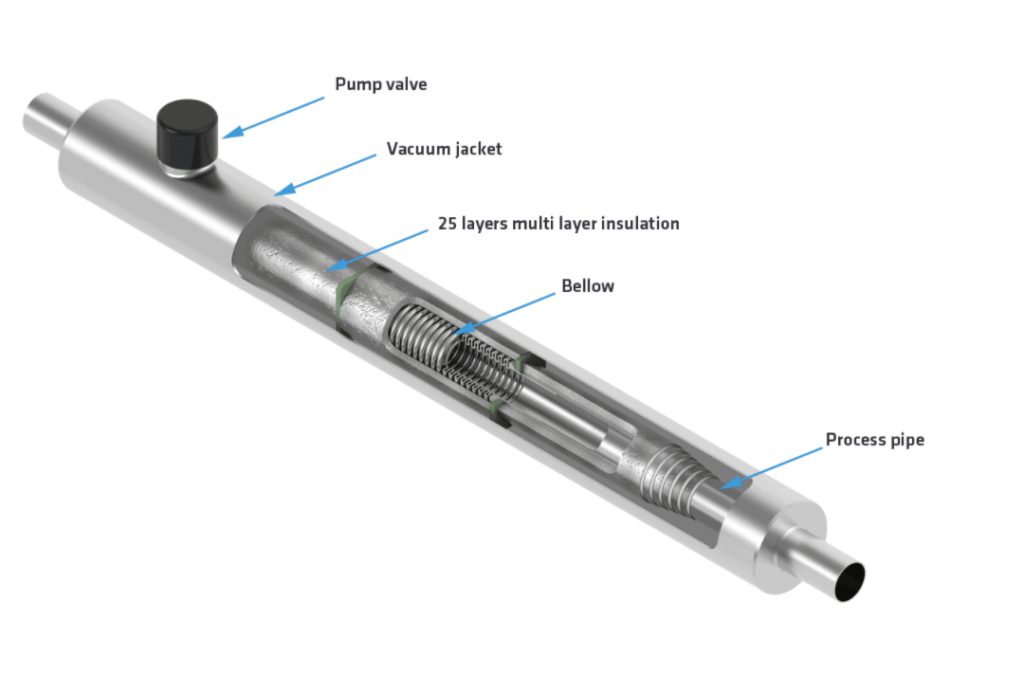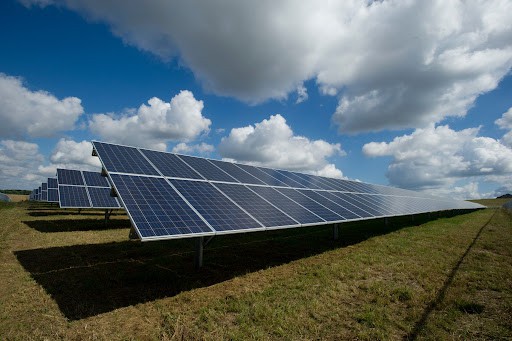Hydrogen is a hot topic in the energy, fuel, and sustainability sector. With the necessary financial support from governments and the development of innovative applications, hydrogen has the potential to become the sustainable energy carrier of the future.
As a result, hydrogen pipelines are also in the spotlight. Does the growing interest in hydrogen mean that existing gas pipelines must be modified or replaced? What are the special requirements for gaseous and liquid hydrogen (also known as LH2) pipelines? What risks are involved in the transport of liquid hydrogen? In this blog, we will answer these questions in detail.
Pipelines for gaseous hydrogen
There are millions of miles of natural gas pipelines around the world. These pipelines transport the gas between cities, or between different countries, to supply more than just local industry with gas. Existing gas pipelines generally have a large diameter and use steel alloys (in the case of high pressure) or, in the case of distribution pipelines, materials such as cast iron, copper, steel, or plastic (PVC or PE).
With increasing sustainability goals and guidelines, the use of natural gas is under pressure. Therefore, natural gas pipeline producers, gas producers, and governments are raising the question of whether existing infrastructures for natural gas can also be used for a more sustainable gas: renewable hydrogen, also know as green hydrogen.
Research into the best pipelines for gaseous hydrogen has been ongoing for several years, and it appears that converting natural gas pipelines into safe hydrogen networks in possible.
Gasunie, the company currently responsible for the transport, storage, and conversion of natural gas in the Netherlands, is working on a project that would make the Netherlands the first country where the existing gas pipelines are modified to transport hydrogen.
“The contiguous national infrastructure will not only connect our ports and industrial clusters to each other and to hydrogen storage sites, but it will also connect them to our neighboring countries. As a result, the Netherlands will become the gateway to Europe for the global hydrogen market.” – Han Fennema, CEO of Gasunie.
That existing steel pipelines can be used for hydrogen is, however, not a given. A report by Hydrogen Europe shows that the possibilities certainly exist but that not every infrastructure is the same. It will therefore be necessary to evaluate the extent to which adjustments are needed for each infrastructure.
Tip! Want to know more about the different forms of hydrogen production? Then read on in our blog on green, grey and blue hydrogen.
Where pipelines for gaseous and liquid hydrogen (LH2) meet
The pipelines we talk about above are used to transport gaseous hydrogen over long distances. But what do the pipelines for transporting hydrogen in liquid form look like? And where exactly is hydrogen liquefied, since the substance is gaseous under normal atmospheric conditions?
The Botlek
One of the locations where gaseous and liquid hydrogen meet is Rotterdam’s Botlek. Here, the large-scale production and storage of hydrogen (in gaseous form) takes place reformers, after which it is liquefied with so-called liquefiers.
The area contains both pipelines for gaseous hydrogen and transfer lines for liquid hydrogen, through which this cryogenic liquid is led from storage tanks to tankers for transport. The storage tanks in these areas are usually large and optimally insulated to store large quantities of hydrogen.
As early as 1988, when the infrastructures for hydrogen were built in the Botlek, Demaco was the preferred party for the construction of cryogenic infrastructures for liquid hydrogen. The network of vacuum insulated transfer lines in the Botlek was the first major hydrogen project that our engineers constructed. With success, because hardly any repairs or maintenance was required up until today.
Transfer lines for liquid hydrogen (LH2)
The transport of gaseous hydrogen is complex; that of liquid hydrogen is, if possible, even more, complicated. In order to avoid waste and ensure optimal safety, transfer lines for liquid hydrogen must be exceptionally well insulated. This is because liquid hydrogen has an extremely low temperature of -252.9 °C.
Safety is essential when transporting liquid hydrogen. In combination with oxygen, the cryogenic liquid can cause explosions. In case ice-cold liquid hydrogen is released due to a leak in the transfer line or due to insufficient insulation, there is a high probability that the surrounding oxygen will condense. The condensed oxygen, in combination with liquid hydrogen, can lead to dangerous situations. For this reason, transfer lines for liquid hydrogen are subject to more stringent requirements than those for liquid oxygen or liquid nitrogen.
Vacuum insulation (VIP) has proven to be the method of choice for optimal insulation of liquid hydrogen transfer lines. A high-vacuum environment is created by insulating pipelines or systems with a double wall and drawing out all the air between these walls. In the vacuum, hardly any molecules remain, which means heat transfer cannot occur from the hot outer tube (vacuum jacket) to the cold inner tube (process pipe). Thus, a vast amount of the surrounding heat is kept out of the system or the pipe.
Vacuum insulated transfer lines have several advantages. First, the high quality of the piping provides very high efficiency, keeping the long-term operating costs for the system lower than those of conventional insulating materials.
Tip! Want to know more about the interesting characteristics of hydrogen? Then read on in our blog on the energy content of hydrogen.

Secondly, vacuum insulated transfer lines take up less space than conventional insulation materials (PIR/PUR, Foamglas, Armaflex, Perlite, or Misselon). The double-wall offers an insulation value that is so high that it can only be approached with the above materials when applying many layers of material. This significantly increases the diameter of the pipe while also increasing the chance of oxygen condensation, as conventional insulation is less vapor-tight. A safety concern that does not arise with vacuum insulation.
Finally, one more benefit that we already briefly addressed in our earlier blog on liquid hydrogen. In some specific industries, it is required that liquid hydrogen transfer lines are equipped with double-containment for additional safety (should the process line leak, the double-containment will absorb it.)
While other insulation methods require the construction of an additional wall to meet this requirement, vacuum insulation automatically has two walls. This makes vacuum insulated transfer lines extra safe, extra widely applicable, and by far the best economical choice.

Are you interested?
Demaco has some 30 years of experience in designing and producing vacuum insulated infrastructures for liquid hydrogen and all other cryogenic liquids with extremely low temperatures. Liquid natural gas, for example, but also liquid nitrogen, liquid oxygen and helium. Do you have questions about our services? Feel free to contact us or browse through our products and projects for more information.
Would you like to read more about hydrogen? Check out our recent blogs about the energy density of hydrogen and the hydrogen electrolyzer, fossil gas and renewable energy for more.
